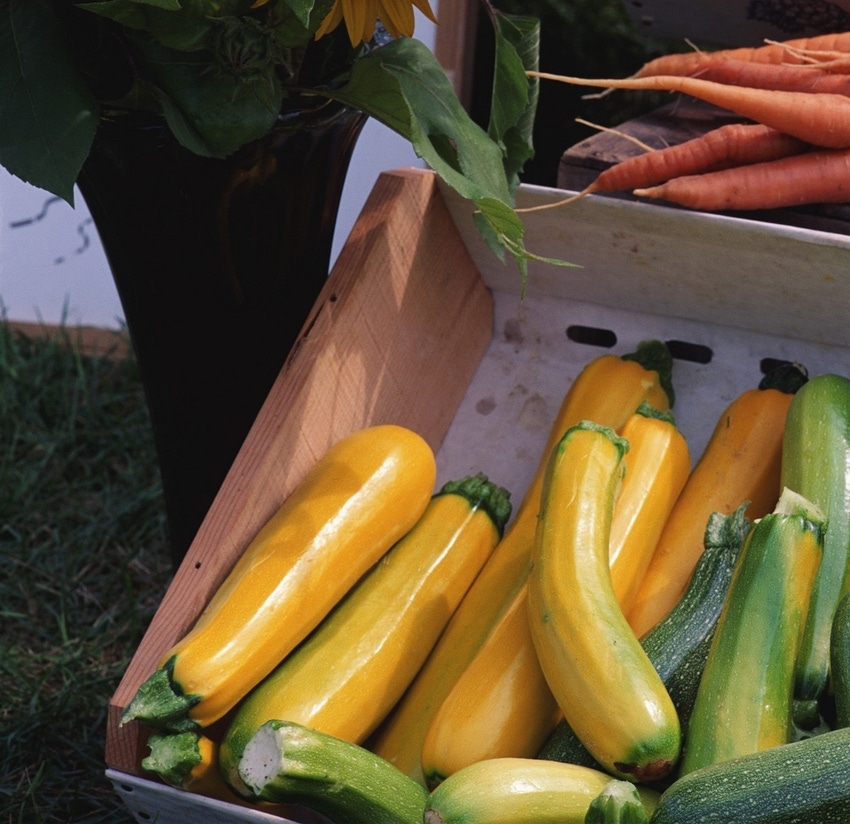
The challenges of food security have not gone unnoticed by USDA's Sonny Ramaswamy, the director of the National Institute of Food and Agriculture (USADA-NIFA), who, in a recent conference, shared his vision for the security and safety of America’s food supply, which he says is under continuous threat from numerous foreign, emerging, and endemic pests, diseases, and toxic elements, such as contaminants.
March 9, 2017

While modern technological developments and breakthroughs have given us significant scientific and medical advancement, the 21st century is not without its challenges. A smaller world in terms of agricultural trade for example, has brought new threats of emerging pests, plant diseases, and contaminants, all of which is challenging the U.S. food security.
Concerns over natural disasters and bioterrorism are on the rise given mounting social and political tensions worldwide, and concerns are growing related to a changing climate and pressures on the environment brought about by industrial expansion and population growth.
Economists cite the need for enhanced food security as U.S. producers increase fruit, vegetable and livestock production in the years ahead in an effort to meet the domestic and international need for more food as population numbers soar. Production, transportation and storage of food securely will become more critical they say, especially considering emerging threats.
The challenges of food security have not gone unnoticed by USDA's Sonny Ramaswamy, the director of the National Institute of Food and Agriculture (USADA-NIFA), who, in a recent conference, shared his vision for the security and safety of America’s food supply, which he says is under continuous threat from numerous foreign, emerging, and endemic pests, diseases, and toxic elements, such as contaminants.
TACTICAL SCIENCES
It was this vision that gave inspiration for what he called the first of its kind national conversation regarding “Tactical Sciences for the Protection of the U.S. Agricultural Enterprise,” held at and hosted by the University of Maryland-College Park last month (Feb. 15-16).
The event pulled together more than 75 NIFA partners and stakeholders, representing several federal agencies, commodity groups, associations, universities and industry across the nation to discuss food security in the 21st century.
“I couldn’t be more pleased about the dialogue, energy, and ideas that emanated from this conversation,” said Ramaswamy following the event. “We need to strengthen the investments we make in our tactical science capabilities to better secure our nation's food production system.”
To kick off the two-day summit, University of Maryland-College Park Dean Craig Beyrouty discussed the importance of a comprehensive food security partnership and highlighted some specific forces he said are laying siege to the integrity of our food supply, namely a changing climate, limited water and land resources and the growing threat of agro-terrorism.
As the cornerstone of the University’s land-grant mission, he said the college is uniquely positioned and committed to ensuring a safe and secure global food system through a hybrid of research and educational programs and practical applications in the community.
According to NIFA, agriculture and agriculture-related industries contributed $835 billion to the U.S. gross domestic product, and helped create more than 17 million jobs in 2014 alone. This economic impact, and the security and safety of America’s food supply, remain at risk, and the scope and number of those threats are growing.
NEW METHODS REQUIRED
Ramaswamy told participants of the event that in order to meet the challenges facing the U.S. food industry, new methods would be required, not the least of which he referred to as "tactical sciences." He defined tactical science programs as those that address the integrity, reliability, sustainability, and profitability of the U.S. food and agriculture system against emerging threats.
“NIFA has several programs that effectively support the development of tactical science methods, tools and networks. These include surveilling, detecting, monitoring, and managing plant, animal, and public health pests, diseases and contaminations, and enhancing livestock, crop production diversification, and efficiency,” Ramaswamy explained.
He said NIFA’s current tactical science investments include three areas: detection and diagnostics through the National Plant Diagnostic Network and the National Animal Health Laboratory Network; regulatory systems support through the Minor Crop Pest Management, Food Animal Residue Avoidance Database and the Minor Use Animal Drugs Program; and deployment of new crop and animal production and protection technologies and management systems through programs like Crop Protection and Pest Management, Minor Crop Pest Management, Minor Use Animal Drugs Program, and the Extension Disaster Education Network.
NEW THREATS
But more is needed as the possibility of new threats surface. He said critical issues and considerations include:
What economic, political, social, technological, and scientific trends/forces will impact security of the American food system enterprise in the next 10 years?
What efforts are currently working related to the Tactical Sciences, and where are opportunities for improvement?
What should a successful approach and strategy for the Tactical Sciences look like moving forward?
Ramaswamy offered six points that should form the construct of the conversation between partners. In asking the group what more they can do as individuals and as members of different communities to ensure the security of the food system, Ramaswamy emphasized:
Transforming lives through the delivery of knowledge to the end user;
Identifying the existential threat;
National security;
Challenges and opportunities;
A vision for a path forward; and,
A charge to the group to determine our nation’s tactical sciences efforts.
He said the next steps following the February meeting would be development of a shared vision and message related to Tactical Sciences to communicate the importance to external and internal audiences.
You May Also Like



